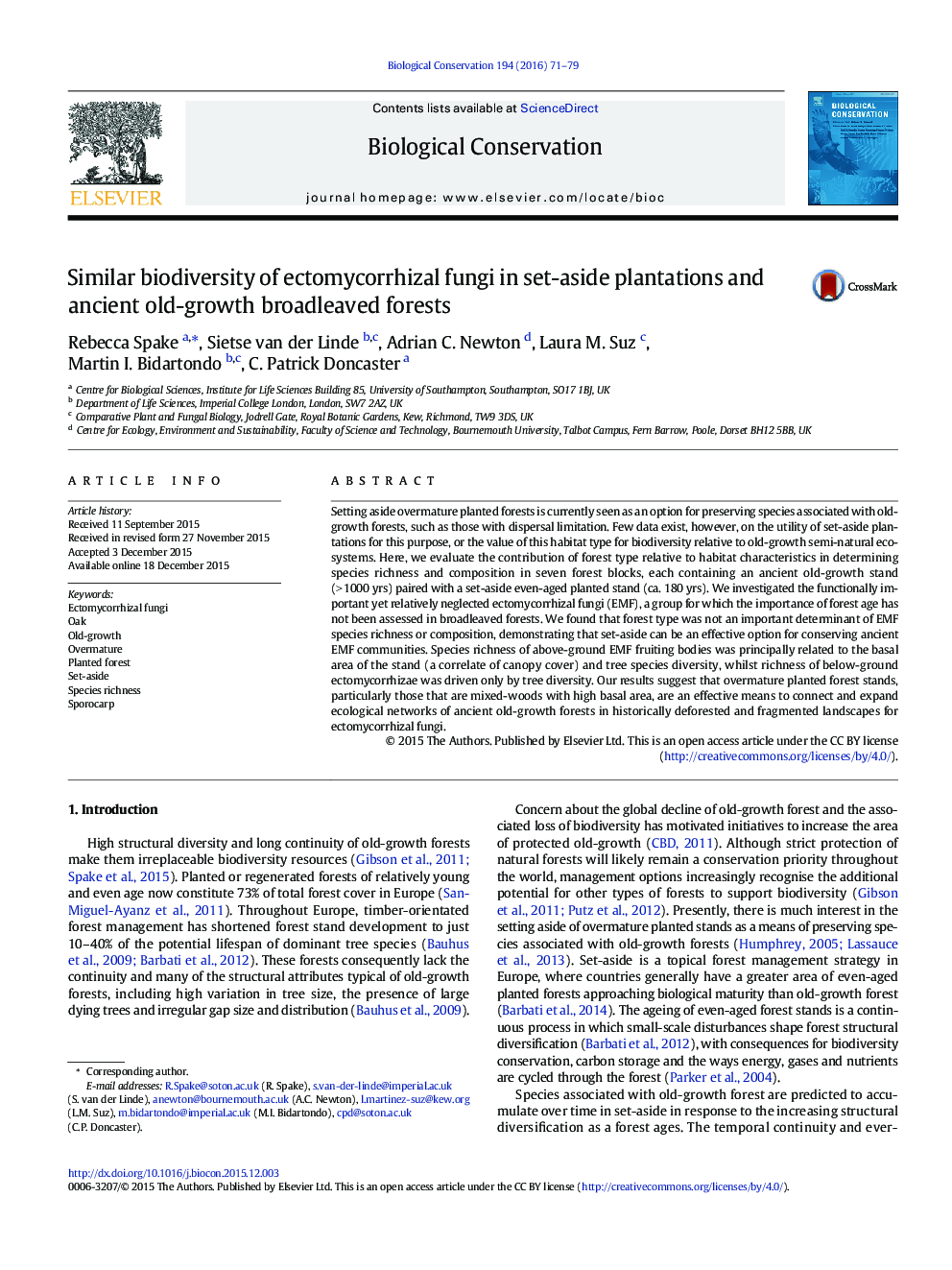| کد مقاله | کد نشریه | سال انتشار | مقاله انگلیسی | نسخه تمام متن |
|---|---|---|---|---|
| 6298781 | 1617907 | 2016 | 9 صفحه PDF | دانلود رایگان |
عنوان انگلیسی مقاله ISI
Similar biodiversity of ectomycorrhizal fungi in set-aside plantations and ancient old-growth broadleaved forests
ترجمه فارسی عنوان
تنوع زیستی مشابهی از قارچ های اکتومیکوریزا در کاشت های کنار گذاشته شده و جنگل های گسترده ای باستان قدیم
دانلود مقاله + سفارش ترجمه
دانلود مقاله ISI انگلیسی
رایگان برای ایرانیان
کلمات کلیدی
موضوعات مرتبط
علوم زیستی و بیوفناوری
علوم کشاورزی و بیولوژیک
بوم شناسی، تکامل، رفتار و سامانه شناسی
چکیده انگلیسی
Setting aside overmature planted forests is currently seen as an option for preserving species associated with old-growth forests, such as those with dispersal limitation. Few data exist, however, on the utility of set-aside plantations for this purpose, or the value of this habitat type for biodiversity relative to old-growth semi-natural ecosystems. Here, we evaluate the contribution of forest type relative to habitat characteristics in determining species richness and composition in seven forest blocks, each containing an ancient old-growth stand (>Â 1000Â yrs) paired with a set-aside even-aged planted stand (ca. 180Â yrs). We investigated the functionally important yet relatively neglected ectomycorrhizal fungi (EMF), a group for which the importance of forest age has not been assessed in broadleaved forests. We found that forest type was not an important determinant of EMF species richness or composition, demonstrating that set-aside can be an effective option for conserving ancient EMF communities. Species richness of above-ground EMF fruiting bodies was principally related to the basal area of the stand (a correlate of canopy cover) and tree species diversity, whilst richness of below-ground ectomycorrhizae was driven only by tree diversity. Our results suggest that overmature planted forest stands, particularly those that are mixed-woods with high basal area, are an effective means to connect and expand ecological networks of ancient old-growth forests in historically deforested and fragmented landscapes for ectomycorrhizal fungi.
ناشر
Database: Elsevier - ScienceDirect (ساینس دایرکت)
Journal: Biological Conservation - Volume 194, February 2016, Pages 71-79
Journal: Biological Conservation - Volume 194, February 2016, Pages 71-79
نویسندگان
Rebecca Spake, Sietse van der Linde, Adrian C. Newton, Laura M. Suz, Martin I. Bidartondo, C. Patrick Doncaster,
